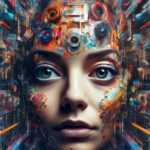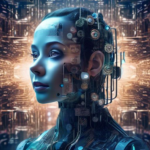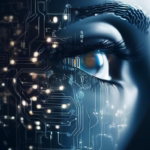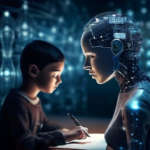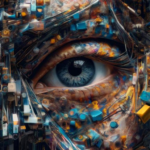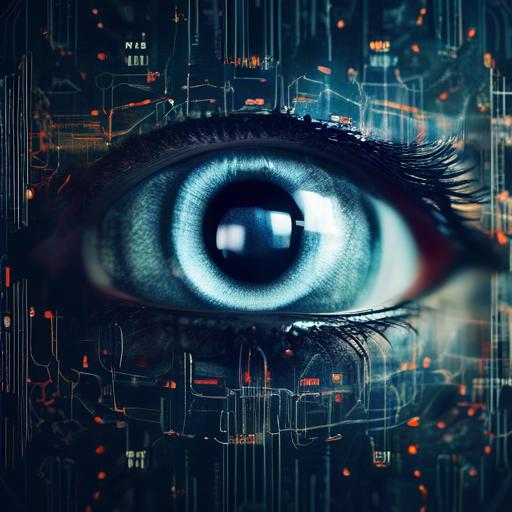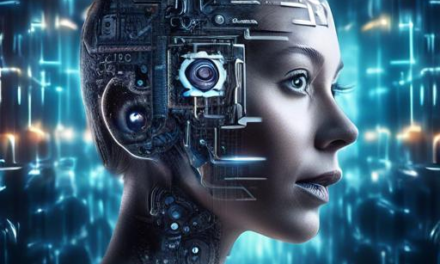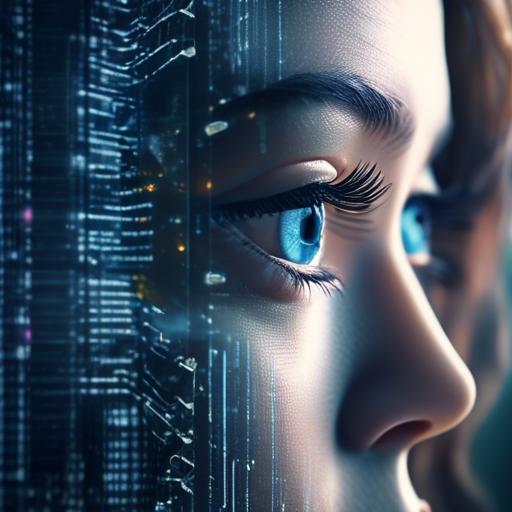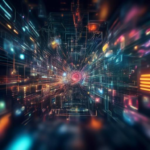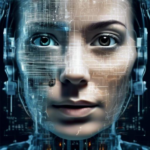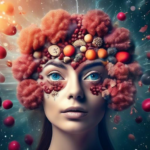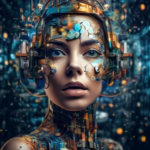In an age where creativity flows effortlessly from the fingertips of artists wielding digital brushes, the rise of AI-generated art has painted a new canvas for imaginative expression. But with this surge of innovation, a shadowy specter lingers — plagiarism concerns. Just as the birth of the camera once challenged the painter’s craft, AI-generated art is stirring debates, raising ethical eyebrows, and beckoning us to redefine originality. As we step into this brave new world, let us embark on a journey to navigate the labyrinth of AI creativity with a supportive and thoughtful approach. Here, we will explore practical ways to address the complex, yet fascinating, issue of plagiarism in AI art, ensuring that the integrity of artistic expression remains gilded with genuine brilliance.
Table of Contents
- Understanding the Landscape of AI Art and Plagiarism
- Identifying Red Flags: When AI Art Raises Ethical Questions
- Legal Frameworks and Intellectual Property in Digital Creations
- Navigating Copyright Laws for AI-Generated Works
- Implementing Ethical Practices in AI Art Development
- Promoting Originality: Encouraging Creative Innovation in AI Art
- Best Practices for Artists: Protecting Your Work in an AI-Driven World
- Final Thoughts
Understanding the Landscape of AI Art and Plagiarism
The rise of AI-generated art has seen an explosion of creativity, but it has also brought forth complex plagiarism concerns. To navigate this evolving landscape effectively, it’s essential to understand the nuances between inspiration and infringement. AI art often draws from vast datasets containing millions of images, and distinguishing original creativity from replicated work can be tricky.
The line between inspiration and plagiarism in AI art can be blurred. However, creators can implement specific strategies to ensure originality. Here are some key practices:
- Attribution: Always acknowledge the sources and datasets used to train AI models.
- Transparency: Provide detailed information on the AI’s training process and the nature of the datasets.
- Regular Audits: Conduct periodic checks to identify any potential overlaps with existing artwork.
- Creative Modifications: Make significant changes to AI-generated outputs to ensure distinctiveness.
Legal frameworks surrounding AI art are still catching up with technology. It’s crucial for artists and developers to stay informed about intellectual property laws to avoid unintentional infringements. Familiarizing oneself with terms like “fair use” and “derivative works” can prove invaluable.
| Best Practice | Benefit |
|---|---|
| Attribution | Encourages transparency and respect for original creators |
| Transparency | Promotes trust and authenticity in AI-generated works |
| Regular Audits | Helps in identifying and correcting potential overlaps |
| Creative Modifications | Ensures uniqueness and avoids direct replication |
Artists and developers can also use advanced tools to protect their works. Blockchain-based platforms, for example, offer tamper-proof records of originality, providing a robust defense against plagiarism claims. By integrating these tools, creators can safeguard their intellectual property effectively.
The landscape of AI art is both thrilling and challenging. Addressing plagiarism concerns requires a multifaceted approach involving ethical practices, legal awareness, and technological aids. By adopting these strategies, both new and seasoned AI artists can pursue innovative creations while honoring the integrity of original works.
Identifying Red Flags: When AI Art Raises Ethical Questions
In the rapidly evolving world of AI art, discerning the ethical boundaries can be a formidable challenge. One of the key indicators that merit scrutiny is the presence of **individual artistic elements that are directly copied** from existing works. Exclusive and recognizable styles, particularly those of renowned artists, repercuss in the AI-generated pieces and can be deemed not just homage, but blatant plagiarism.
- **Direct replication of signature techniques**: AI models that reproduce the exact brushstrokes of a celebrated artist.
- **Repetition of specific motifs**: When AI art excessively mirrors unique symbols or themes that are closely-related to a particular artist’s body of work.
- **Similar overall compositions**: Constructing scenes that are indistinguishably similar in framework to existing masterpieces.
While these instances constitute clear-cut examples, ethical nuances also emerge in subtler forms. The practice of aggregating data from various sources without due credit raises questions. AI that has been trained on vast datasets might inadvertently create art that feels like a mosaic of previously established works—**an intricate patchwork of creativity** where identifying individual influences becomes laborious yet crucial.
| Red Flag | Description |
|---|---|
| Direct Replication | Exact duplication of style or technique |
| Motif Overlap | Use of significant and unique symbols/themes |
| Composition Similarity | Mirror images in framework and scene arrangement |
To foster an ethical approach, vigilance and transparency are paramount. Creators, collectors, and AI developers need to *pay close attention* to the provenance of the datasets used. Ensuring that the source material is either in the public domain or used with explicit permission can help mitigate many legal and moral conflicts.
**Ethical AI usage guidelines include**:
- Documenting data sources clearly and publicly.
- Seeking licenses or permissions when using contemporary works.
- Implementing robust detection systems to verify originality.
In an age where AI’s capabilities are ascending rapidly, embedding an awareness of these **red flags** can help art enthusiasts, stakeholders, and practitioners adopt a conscientious stance on plagiarism concerns.
Legal Frameworks and Intellectual Property in Digital Creations
Understanding and navigating the legal frameworks surrounding AI-generated art can often feel like a labyrinth. At the forefront of these concerns is intellectual property (IP) law, which encompasses copyright, trademarks, and patents. AI art presents unique challenges: who owns the rights to an artwork when it’s created collaboratively by a human and an algorithm? In most jurisdictions, the answer remains nebulous. Legally, IP rights traditionally recognize only human authorship, placing AI-generated art in a gray area.
Plagiarism in the digital realm is another critical issue to address. Various forms of it can plague AI art, from directly copying existing works to misappropriating styles. To foster innovation while respecting existing works, artists and developers should consider:
- Creative Commons Licenses: Using and contributing to databases that allow for shared use under specific conditions can help protect and share artists’ rights.
- Attribution Protocols: Properly crediting sources and inspirations ensures transparency and honors original creators.
- Originality Filters: Implementing AI tools that detect and prevent overly derivative creations can maintain a high standard of uniqueness.
Here’s a brief comparison of some popular legal policies to consider:
| Policy | Coverage | Applications |
|---|---|---|
| Copyright | Exclusive rights to reproduce and distribute works | Music, Literature, Art |
| Trademarks | Protection of brand names and logos | Business, Marketing |
| Patents | Rights granted for new inventions | Technology, Engineering |
To mitigate legal risks, creators, and developers can also consider employing contractual agreements and terms of use that explicitly define ownership and usage rights of AI-generated content. Establishing clear boundaries within collaboration agreements can prevent disputes later on. Moreover, community guidelines for AI platforms can foster a culture of respect and integrity, holding users accountable for adhering to ethical creation standards.
Navigating Copyright Laws for AI-Generated Works
Understanding copyright laws in the context of AI-generated works can often feel like navigating a labyrinth. The legal landscape is still evolving, and many creators, both human and machine, find themselves entangled in uncertainty. However, it’s essential to stay informed and proactive to address potential plagiarism concerns effectively.
Typically, copyright protection is granted to works that show a minimum level of originality and are fixed in a tangible medium. The challenge with AI art arises from the authorship question. Since AI lacks the legal standing of a ”person,” the original works it generates might fall into a bit of a gray area. This creates an urgent need for clear agreements and guidelines. Here are some steps you can take to safeguard your AI-generated creations:
- Document the Creation Process: Keep comprehensive records detailing how the AI work was generated. This documentation can include code, training data, and user inputs, serving as evidence of origin and process.
- Affirm Human Involvement: Emphasize any human contributions—whether in programming, curating datasets, or making selective edits—that add an element of human creativity and judgment to meet copyright criteria.
- Legal Agreements: Create explicit contracts or terms of service for any collaborative AI creation platforms, specifying how rights will be managed and who will be credited as the author.
International copyright laws can vary significantly, leading to differing interpretations and rules. Consider these contrasting examples:
| Country | AI Authorship Stance |
|---|---|
| United States | AI works aren’t eligible for copyright protection |
| United Kingdom | Legally recognizes computer-generated works under specific conditions |
Creators must stay informed about the legal standards and regulations relevant to their jurisdictions. Joining intellectual property forums or consulting with a legal expert specializing in copyright can provide invaluable insight and support.
Lastly, advocate for clearer laws and policies. As the creative landscape continues to evolve with AI’s integration, it becomes increasingly important for legislation to address the unique challenges AI-generated works present. By voicing concerns and suggestions to policy-makers, we can collectively contribute to a more robust and fair copyright system.
Implementing Ethical Practices in AI Art Development
Ensuring ethical practices in AI art development is paramount to addressing plagiarism concerns. One of the key strategies is transparency. Creators and developers should openly share the datasets and algorithms used in generating AI art. This transparency ensures that the creation process is clear and accountable.
Here are a few practical steps:
- Maintain detailed records of the datasets and sources utilized.
- Provide credit to original artists and sources where applicable.
- Engage in open dialogue with the art community to establish best practices.
Another important practice is the regular auditing of AI systems. This involves methodological checks to ensure that the art produced is original and not directly copied from existing works. Developers can use built-in plagiarism detection tools within their AI systems to flag suspicious creations. Implementing such measures helps uphold the integrity of the AI-generated art industry.
| Best Practices | Benefits |
|---|---|
| Transparency in Dataset Usage | Builds Trust and Credibility |
| Regular System Audits | Ensures Originality |
Additionally, education plays a crucial role. Developers and artists should be informed about the ethical implications of AI art. Creating guidelines and codes of conduct for AI art development can serve as a framework for ethical decision-making. Collaborating with ethical boards or committees can provide further oversight and guidance.
Ultimately, the goal is to foster a balanced environment where innovation in AI art thrives while maintaining respect for original content creators. By emphasizing ethical practices, the AI art community can address plagiarism concerns effectively and collectively move towards a more responsible future.
Promoting Originality: Encouraging Creative Innovation in AI Art
One of the most effective ways to promote originality in AI-generated art is through the cultivation of a creative ecosystem. This means fostering an environment where AI artists can thrive on innovation rather than imitation. Here’s how you can help nurture that creativity:
- Incorporate diverse data sets: Ensure that the training data for AI models comes from a broad spectrum of sources. This mix can include lesser-known artists, diverse cultural influences, and varying art styles which help the AI to create unique and original pieces.
- Encourage experimentation: Give your AI ample opportunities to ‘think outside the box’. This could mean tweaking algorithms, trying out unconventional techniques, or even challenging the AI with abstract concepts.
- Promote ethical practices: Make sure both AI developers and users are well-versed in the ethical implications of mimicking someone else’s work. This awareness can discourage blatant copying and foster a greater respect for originality.
It’s also crucial to use tools that can identify and mitigate potential plagiarism in AI art. There are several software solutions available that can help detect patterns that may indicate unoriginal content:
| Tool | Primary Use | Benefit |
|---|---|---|
| DPLChecker | Detecting plagiarism | Ensures originality by comparing AI outputs with existing artworks. |
| ArtGuard | Monitoring artwork | Alerts artists when AI-generated art is too similar to their own work. |
| InspireAI | Creative benchmarking | Sets originality standards and rates new creations against these benchmarks. |
Moreover, recognition and reward systems can play a pivotal role in encouraging creative innovation. Create a platform where users can submit their AI art for review and recognition, possibly including:
- Competitions and contests: Organize events that reward the most original AI-generated art. This motivation can ignite a creative spark and acknowledge artists committed to originality.
- Showcasing unique pieces: Develop virtual galleries that feature the most innovative AI artworks. This not only provides exposure but also sets a benchmark for future creations.
- Incentives for innovators: Offer grants or monetary rewards for those who consistently push the boundaries of AI art. This financial support can bolster efforts towards generating unique and original pieces.
By implementing these strategies, we can cultivate an environment where AI art is not only valued for its technological prowess but also for its originality and creative spirit.
Best Practices for Artists: Protecting Your Work in an AI-Driven World
As an artist navigating the captivating world of artificial intelligence, it’s crucial to understand how to safeguard your creative works from plagiarism. Below, we delve into essential strategies to ensure your art remains uniquely yours while embracing the evolutions in AI.
1. Register and Copyright Your Work:
- **Copyright Registration:** Legally protect your art by registering it with relevant authorities in your country. This provides a strong foundation if you need to prove ownership.
- **Watermarking:** Embed visible or invisible watermarks within your digital files. This deterrent can help trace unauthorized use back to you.
- **Metadata:** Utilize metadata to include your name, creation date, and other relevant details directly within the file properties.
2. Leverage Technology:
- **Reverse Image Search:** Tools like Google Reverse Image Search or TinEye can help identify if your artwork has been used elsewhere without permission.
- **Blockchain Technology:** Consider blockchain solutions like Verisart or Codex Protocol, which can offer immutable proof of ownership and authenticity.
- **AI-based Theft Detection:** Platforms and software are emerging that use AI to scan the web for unauthorized copies of your work.
3. Collaborative and Open Licenses:
- **Creative Commons Licenses:** These licenses allow artists to permit certain uses while retaining other rights, offering flexibility and clear usage guidelines.
- **Publicly Share:** Carefully choose specific pieces you’re comfortable sharing widely, while keeping high-value originals or collections more closely guarded.
4. Engagement and Community Building: Establish a strong presence in the art community. Connecting with your audience and other artists can help you spot and address plagiarism quickly. More eyes on your work mean more protection.
| Action | Benefit |
|---|---|
| **Copyright Registration** | Legal protection and proof of ownership |
| **Watermarking** | Deters unauthorized use |
| **Metadata Embedding** | Encodes ownership information |
| **Blockchain Certification** | Immutable proof of authenticity |
By implementing these practices, artists can protect their creative portfolios from unauthorized use and plagiarism, ensuring that the artist’s voice remains the loudest in an AI-driven world.
Final Thoughts
addressing plagiarism concerns in AI art is essential for fostering creativity, originality, and ethical practices in the art world. By being proactive and implementing proper attribution and credit guidelines, we can ensure that artists receive the recognition they deserve for their work. As we continue to navigate the ever-evolving landscape of AI technology, let us remember to uphold integrity and respect for intellectual property. Together, we can create a more ethical and innovative future for AI art. Let’s paint a picture of authenticity, collaboration, and integrity in the world of digital art. Thank you for joining us on this journey. Keep creating and inspiring others with your unique voice in the AI art community.


